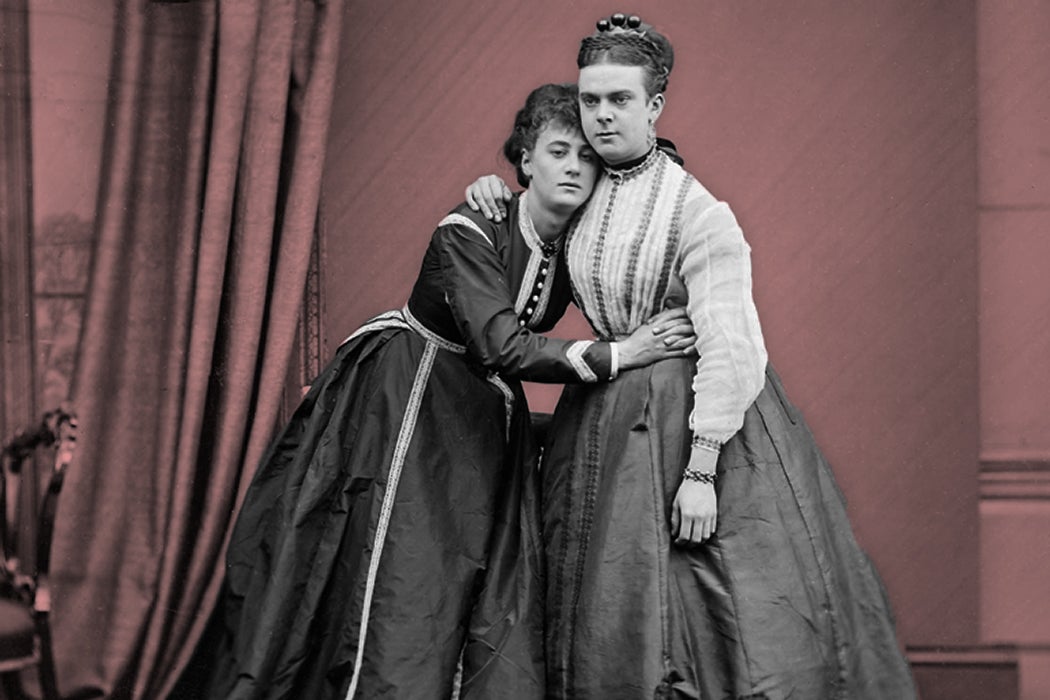Fanny and Stella were arrested for using the women’s bathroom in a theater. At the police station, they were stripped and invasively examined by an official gender-decider: anatomically, they were defined as men. A felony charge of solicitation to commit sodomy was added to the initial misdemeanor of disturbing the peace. During the sensational trial that followed, at least one newspaper used feminine pronouns for the accused. And at that trial, the mother of one of the defendants testified that her child had presented as female since the age of six.
The jury convicted Fanny and Stella on the misdemeanor charge, which the defendants agreed to as a kind of plea bargain in return for promising to be on good behavior for two years. The jury found the pair innocent of the much more serious felony charge, for which one could be sentenced to life with hard labor. (Why, the defense asked, would supposed homosexual male prostitutes be working the women’s bathroom?)
“This qualified victory for transgender rights,” as scholar Simon Joyce describes it, took place in London, England, between 1870 and 1871. A Victorianist, Joyce writes that “public discussions of bathroom use or the correct gender pronouns to use in legal cases” are not as new as we may think.
The Victorians are often seen as the quintessential guardians of rigid gender/sexual boundaries. Their definitions of masculinity and femininity were strictly policed, with women in the private sphere, men in the public, and interactions between them highly codified. But reality was certainly messier than the theory. It’s no surprise, for instance, that baby Victorians appeared in goodly numbers, and not because of spontaneous conception. And the era, like every era, had its gender nonconformists.
The bathroom panic over Fanny Park and Stella Boulton has been variously interpreted. The accused, named Frederick Park and Thomas Boulton at birth, are called the “young men who shocked Victorian England” in a 2014 book. One of them is the titular subject of a 2016 play. Over the years they have been characterized as actors, drag performers, prostitutes, and cross-dressers. They’ve become homosexual icons and pioneers, especially in relation to a legal system that would be much less tolerant of Oscar Wilde two decades later.
It is somewhat “disturbing,” Joyce writes, that recent commentators “essentially side with the prosecution by situating Fanny and Stella in the history of Victorian homosexuality” by defining them as gay men working as prostitutes. Joyce challenges the “presumption of guilt that runs through [recent] historical accounts.”
In fact, Joyce argues,
the story of Fanny and Stella makes more sense—both in its own historical terms and now—when read as a trans narrative. […] Fanny and Stella’s story is studded with moments of recognition and also with aspects that are barely comprehensible today, and…those points of incommensurability with current thinking are just as valuable in helping us understand transgender people as having a history, albeit one that is sometimes fractured and non-linear.
Fanny and Stella did act in women’s roles on stage and did alternate dressing off-stage in both men’s and women’s clothes. The police, it turned out, had had them under surveillance a year before their arrest in April 1870 at the Strand Theatre. Stella sometimes identified herself as Lady Arthur Clinton, wife of a Member of Parliament. (Lord Arthur died upon receiving his subpoena to appear in the case; scarlet fever was cited, but rumors of suicide persisted, as did rumors that he wasn’t dead at all but had fled the country.)
Weekly Newsletter
During the trial, both supporters and detractors were in states of gender confusion. Friends and enemies alike got tied in knots over pronouns. An enemy expressing what Joyce calls “transphobic rage” testified that “I kissed him, she or it.” The handwritten trial transcripts show a flurry of edits. Reference to female clothing by witnesses “seems to have led the stenographers, who were presumably in court and could see the prisoners in typical masculine clothing, to correct and then re-correct themselves.”
“Trans” is, of course, a relatively new term. “The sort of negotiations across the gender boundary that we find in the lives of Fanny and Stella” show that individuals have affirmed their gender identity throughout history, regardless of the then-current terminology and the classifications such terminology represent. They have done this, Joyce, concludes, in the context not only of “public and legal hostility but also of surprising sympathies.”
Editor’s Note: This story was updated to correct a typographical error.
Support JSTOR Daily! Join our membership program on Patreon today.







